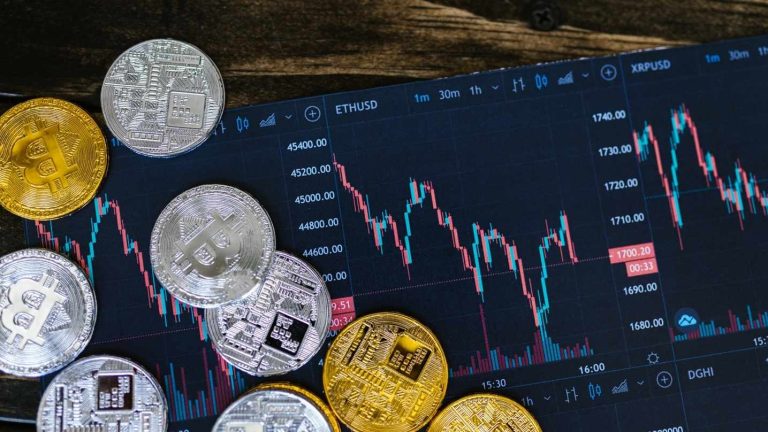In the fast-paced world of trading, Contract for Difference (CFD) trading has garnered significant attention due to its flexibility and accessibility. While traditional assets like stocks and bonds have long been the focus of many traders, alternative assets such as cryptocurrencies and exchange-traded funds (ETFs) are gaining traction in the CFD market. This article delves into the world of alternative assets in CFD trading, exploring cryptocurrencies, ETFs, and other investment vehicles that provide exciting opportunities and new challenges for traders.
Understanding Alternative Assets in CFD Trading
The term “alternative assets” refers to investment vehicles that fall outside traditional asset classes like stocks, bonds, and cash. These assets include a wide range of investments, such as cryptocurrencies, commodities, real estate, and precious metals, which offer unique benefits and risks. In CFD trading, these alternative assets are used for speculation, allowing traders to capitalize on price movements without owning the underlying asset. The appeal of trading alternative assets through CFDs lies in their potential for high returns, the ability to leverage positions, and the opportunity to trade in various market conditions.
Cryptocurrencies, for example, have become a popular choice due to their volatility and the potential for significant price movements. Meanwhile, ETFs offer diversification and exposure to multiple asset classes, providing traders with a safer way to diversify their portfolios. Additionally, commodities like gold and oil remain staples for alternative asset trading, offering stability and security in times of economic uncertainty. Understanding these assets’ characteristics is crucial for successful trading in CFDs. Get started with ADSS.
Cryptocurrencies in CFD Trading
Cryptocurrencies have revolutionized the trading landscape in recent years, bringing with them new opportunities and challenges. Popular cryptocurrencies like Bitcoin, Ethereum, and others have become essential instruments for CFD traders due to their high volatility and strong market movements. When trading cryptocurrencies via CFDs, traders do not own the underlying coins but instead speculate on their price movements, which means they can profit from both rising and falling prices.
One of the key advantages of trading cryptocurrencies in CFDs is the ability to use leverage. Leverage allows traders to control larger positions with a smaller capital outlay, potentially amplifying gains. However, leverage also comes with increased risk, especially in the highly volatile cryptocurrency market, where prices can fluctuate dramatically within short time frames.
Exchange-Traded Funds (ETFs) in CFD Trading
Exchange-traded funds (ETFs) have gained popularity among traders for their ability to offer diversification, flexibility, and liquidity. An ETF is a fund that holds a collection of assets, such as stocks, bonds, commodities, or real estate and trades on an exchange like a stock. In CFD trading, ETFs allow traders to speculate on the price movements of an entire basket of assets without needing to purchase each asset individually.
One of the main reasons ETFs are attractive for CFD trading is their ability to diversify risk. Traders can gain exposure to a variety of sectors or asset classes with a single trade, which reduces the risk associated with trading individual stocks or commodities. For example, a trader might choose an ETF that tracks the performance of major indices like the S&P 500 or a commodity ETF that focuses on oil or gold.
Commodities and Other Alternative Assets in CFD Trading
Beyond cryptocurrencies and ETFs, numerous other alternative assets are frequently traded through CFDs, including commodities, real estate, and precious metals. Commodities such as gold, silver, and oil have long been considered safe-haven assets in times of economic uncertainty. As CFDs allow traders to speculate on commodity price movements without needing to own the physical asset, these markets present opportunities for profit in both bull and bear markets.
Gold, in particular, has earned its place as a popular choice among traders due to its historical reputation as a store of value. Oil, too, is highly liquid and widely traded, with price fluctuations driven by geopolitical events, supply and demand dynamics, and global economic conditions. Precious metals such as platinum and silver also offer diversification opportunities, as their prices are often less correlated with traditional financial markets.
Strategies for Successful CFD Trading with Alternative Assets
Trading alternative assets through CFDs requires a well-thought-out strategy to manage the inherent risks and maximize potential returns. One of the most critical aspects of CFD trading is risk management. Traders should always use stop-loss orders to limit potential losses, especially in volatile markets like cryptocurrencies. Setting a stop-loss ensures that the position is automatically closed if the market moves against the trader beyond a predetermined point, preventing catastrophic losses.
Another key strategy is diversification. While alternative assets can be highly lucrative, they can also be risky. By diversifying across multiple asset classes, such as cryptocurrencies, ETFs, commodities, and precious metals, traders can spread their risk and avoid being overly exposed to one market. Combining alternative assets with traditional investments like stocks and bonds can provide a more balanced portfolio and reduce overall risk.
Conclusion
The world of CFD trading is constantly evolving, and the rise of alternative assets such as cryptocurrencies, ETFs, commodities, and real estate provides traders with exciting opportunities for diversification and profit. While these assets offer significant potential, they also come with their own set of risks that must be carefully managed. By understanding the dynamics of these alternative markets, employing sound strategies, and staying informed about regulatory changes, traders can unlock the full potential of alternative assets in CFD trading.




